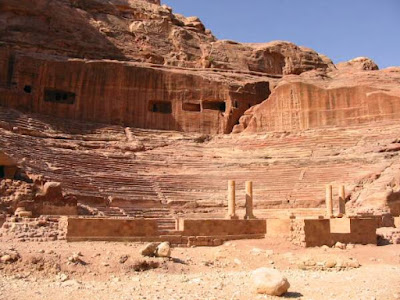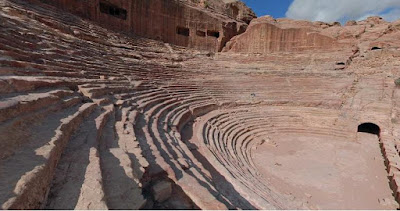From Korat take the highway no. 224 to the south to Chok Chai district (about 30 km). Then take to the left turn and continue on the road no. 24. It is approximately 77 km from Chok Chai to the intersection (in Nang Rong district) with signed road to Prasat Phanom Rung. Follow the concrete road for 12 km to get to the ancient hill top Khmer temple. The temple on the hill could be seen from a distance.
It is comprised of 13 main parts. Part one is the stairway starting near the car parking. From this point you could not see any buildings until you walk to the end of the stairway. Then there is a pavilion setting on the right side, at the end of the stairway.
The third section is the flat pathway with columns on both sides. It leads to "Naga bridge", the section four. Next, there are 52 steps leading to the top of the hill. This construction connects to part six, the bridge linking to principal tower.

The second level Naga bridge, the boundary gallery, and the third level Naga bridge are located before the main building. The main square based tower is made of pink sandstone, which is 9.2 meters width and 23 meters tall.
At the center of the building there is the "Shiva Lingam ", the most sacred religious object. There are two stone building and one minor building to the northeast and the southwest of the main building. In front of the tower, to the northeast and the southeast, are two laterite buildings used as libraries.
Normally visitors would walk up the ladder from the bottom. However you can drive up to the summit and park just behind the compound for a fee of 50 Thai Baht for a van. Entrance fee for visitors is 40 Thai Baht each for foreigners, and 20 Thai Baht each for Thais.
Every year in April there is a cerebration. Many tourists come to celebrate and worship at this ruin. There are display of beautiful parades, north eastern style dinner, traditional shows, sound and light show. In 2003 the cerebration takes place on 5 and 6 April.
 Petra's theater was built in the 1st century AD. It is quite large, with a seating capacity of over 6,000 people. The theater's 45 rows of seats are divided horizontally by two diazomata . Its cavea faces north and east, to keep the sun out of the spectators' eyes. Above the cavea are numerous tomb fronts, which were destroyed to make way for the theater's upper tiers of seating.
Petra's theater was built in the 1st century AD. It is quite large, with a seating capacity of over 6,000 people. The theater's 45 rows of seats are divided horizontally by two diazomata . Its cavea faces north and east, to keep the sun out of the spectators' eyes. Above the cavea are numerous tomb fronts, which were destroyed to make way for the theater's upper tiers of seating. 















